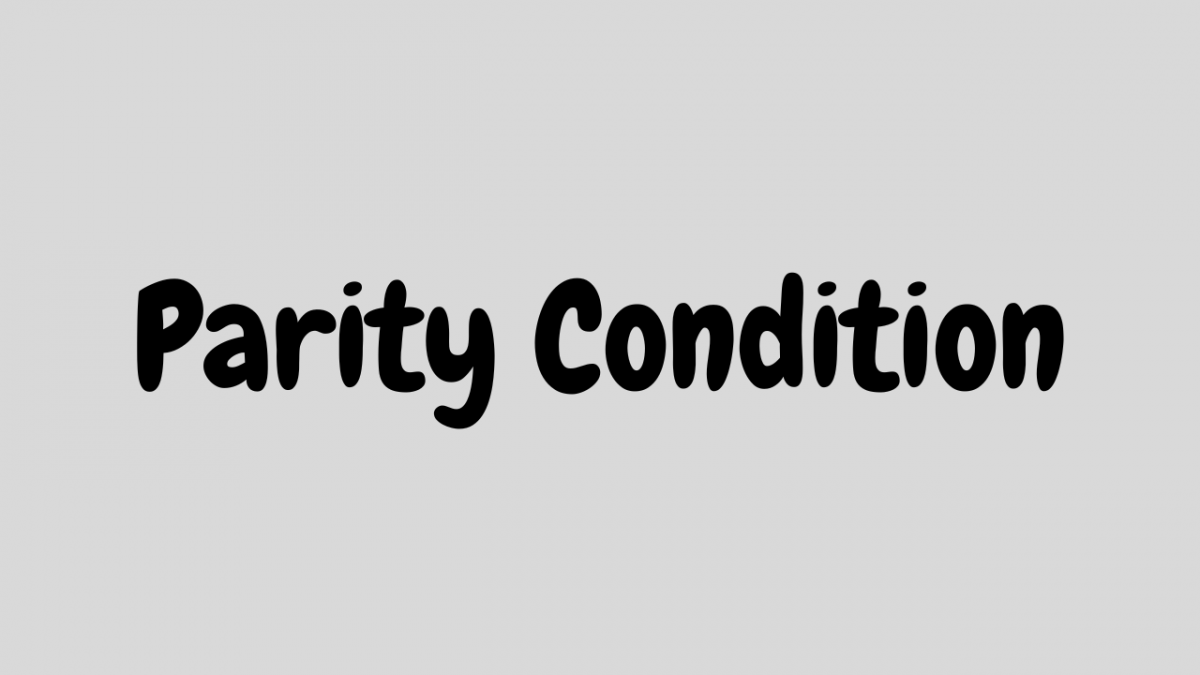Introduction
In the realm of decision-making, our thought processes are influenced by various mental models that shape our perception of reality. One such mental model that frequently leads to irrational decision-making is the Parity Condition. Rooted in human psychology, the Parity Condition is a cognitive bias where individuals or groups base their judgments on superficial or irrelevant factors rather than considering the core elements of a situation. This mental trap can significantly impact personal life decisions, business scenarios, and public policy-making, often leading to outcomes that are contrary to our best interests. In this blog post, we will explore the Parity Condition, its prevalence in our day-to-day lives, examples of its occurrence, underlying psychological biases, strategies to identify and avoid it, and the importance of actively steering clear of this mental fallacy.
Understanding the Parity Condition
The Parity Condition, also known as the equality principle, refers to the tendency to prioritize superficial or arbitrary factors when making judgments or decisions instead of focusing on the intrinsic merits of the situation at hand. It occurs when people perceive certain factors as relevant even when they have no real bearing on the decision-making process.
This mental model is deeply rooted in human psychology, driven by the need for simplicity, heuristic thinking, and a preference for making quick judgments. By relying on superficial cues or easily accessible information, individuals may neglect crucial factors and rely on flawed reasoning, leading to irrational decision-making.
Prevalence in Daily Life
The Parity Condition manifests in various aspects of our lives. Consider the following examples:
- Personal Life Decisions: Imagine a person contemplating two job offers. Despite one offer having a significantly higher salary, they choose the other because it is in a prestigious location. In this case, the person is giving more weight to the superficial factor of location rather than considering the core elements such as job responsibilities, growth opportunities, and work-life balance.
- Business Scenarios: In the corporate world, the Parity Condition can influence decisions regarding promotions or hiring. Suppose a company promotes an employee solely based on their seniority rather than their actual performance and skills. By focusing on a superficial factor like years of service, the company may disregard the more critical factors that ensure competence and effectiveness in the new role.
- Public Policy-Making: Governments and policymakers are not immune to the Parity Condition. For instance, if a government bases its infrastructure development plans solely on the popularity of a region or the political influence of its representatives, it may overlook areas with greater needs or long-term economic benefits. This prioritization of superficial factors can have adverse consequences for society as a whole.
Psychological Biases and Underlying Factors
Several psychological biases contribute to the occurrence of the Parity Condition. Anchoring bias, for example, influences individuals to rely heavily on the first piece of information encountered when making decisions, often leading to an insufficient consideration of alternative perspectives.
Confirmation bias, another influential factor, leads people to seek and interpret information that confirms their preexisting beliefs or preferences. When combined with the Parity Condition, individuals are more likely to give undue weight to superficial factors that align with their existing biases, reinforcing their own flawed decision-making process.
Moreover, the availability heuristic plays a role in the Parity Condition by influencing individuals to judge the likelihood of events based on the ease with which examples come to mind. This bias causes people to prioritize information that is readily available, rather than considering a broader range of relevant data.
Identifying and Avoiding the Parity Condition
To avoid falling into the trap of the Parity Condition, it is crucial to develop awareness and employ strategies that promote more objective decision-making. Here are some practical tips:
- Analyze Core Elements: Prioritize the intrinsic merits of a decision by identifying and evaluating the fundamental factors that contribute to its success or failure. Take a step back from superficial cues and focus on essential aspects, such as long-term consequences, feasibility, and alignment with your goals and values.
- Seek Diverse Perspectives: Actively seek out alternative viewpoints and opinions. Engaging in open dialogue with others who have different perspectives can challenge your own biases and broaden your understanding of a situation. This approach helps mitigate the influence of the Parity Condition and encourages more comprehensive decision-making.
- Embrace Deliberate Thinking: Practice conscious and deliberate thinking when faced with important decisions. Slow down your thought process, reflect on the available information, and consider both the immediate and long-term implications of your choices. By intentionally engaging in thorough deliberation, you can counteract the tendency to rely on superficial factors.
Conclusion
The Parity Condition is a cognitive bias that often leads individuals and groups astray in their decision-making processes. By prioritizing superficial factors over essential elements, we risk making irrational choices that can have adverse consequences for ourselves and society. Recognizing the prevalence of the Parity Condition in various contexts, understanding the psychological biases that contribute to it, and employing strategies for objective decision-making can help us navigate this mental trap. By cultivating awareness and actively avoiding the Parity Condition, we can enhance our decision-making skills, make more informed choices, and achieve better outcomes in both personal and professional spheres.
